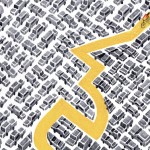
The way public space has been managed over the last fifteen years has been a reflection of the policies that have defined the life of our city. This dossier goes over some of the architectural and urban solutions applied, which haven’t always responded adequately to the challenges posed by housing, mobility, urban sprawl and de-industrialisation.

Barcelona is expelling the working class from the city centre to the periphery. Gentrification and urban sprawl are two results of a single process that must be actively counteracted, as they take us away from a city model that is more mixed and compact, and consequently more just and sensible.

It’s time to start cooking. Let’s mix some cooperative approaches with views on gender and typological experiments, social policies with legal opportunities, and environmental awareness with countercultural and anti-regulatory efforts.

By shifting social change to public spaces they become places for exchange, interaction and production, quite different from their peaceful, neutral image. The collective space is the future wealth of cities.

The “museumization” of a city means that the ordinary space used for everyday and community life turns into a place where everything is for entertainment and consumption. However, these two uses do not have to be mutually exclusive; a balance needs to be achieved.

Josep Bohigas i Tonet Font
The “Barcelona model” was founded with the aim of creating a more just city by improving public space and the urban landscape. After thirty years, the shiny surface conceals urgent issues created by a neglected housing policy.

Public leadership is needed to mark out the areas to be transformed in the future, to set aside the location and to start designing these public spaces. This is what will ensure that this space will become an important part of the city.









